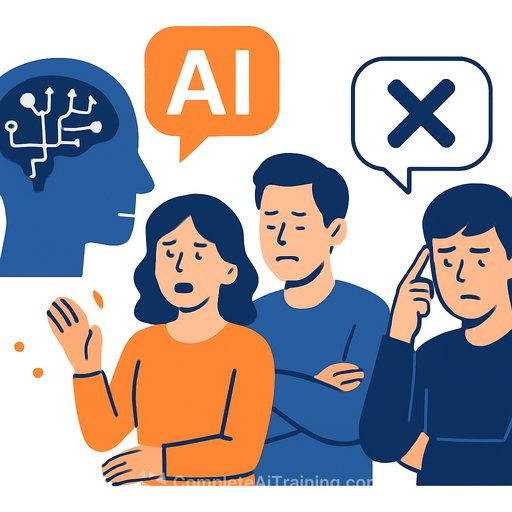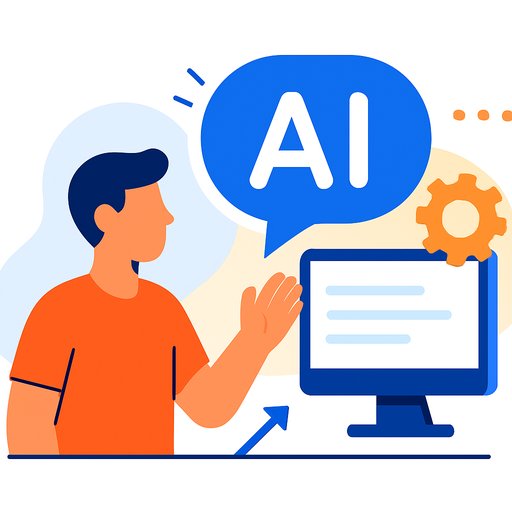"AI is everywhere in game development" - Nexon's claim meets a blunt industry reality
Nexon CEO Junghun Lee says generative AI is now standard across game studios. Plenty of developers called BS.
The tension isn't abstract. Arc Raiders' developer used text-to-speech based on hired voice actors to speed up live service updates, similar to what it did on a prior shooter. The promise: faster iteration, fewer bottlenecks. The pushback: quality, trust, and process debt.
What Nexon is saying
Lee told a Japanese outlet that it's safe to assume "every game company is now using AI." He credits AI with better efficiency in production and live ops, but says the edge still comes from human creativity. In short: AI as table stakes, people as the differentiator.
How Arc Raiders uses AI right now
Arc Raiders hired real actors, then used TTS to generate additional lines from those voices for ongoing content updates. The argument is speed. If you're operating a live service game, new gear and modes need voice. TTS slots in where scheduling and budgets fall short.
The immediate pushback from developers
Indie and AAA devs alike disputed the "everyone uses AI" take. Strange Scaffold's Xalavier Nelson Jr. called it normalization "BS" and said many studios - including theirs - don't rely on generative tools. Others echoed the stance: Kaizen Game Works, D-Cell Games' Chi Xu, and the team behind Demonschool stated they avoid AI in production.
There's also disagreement about outcomes. Some devs argue AI is already making games worse by rewarding "good enough" work that masks deeper production issues. The fear isn't just job loss - it's design shortcuts that erode the experience.
Tim Sweeney's counterpoint
Epic's CEO pushed back on criticism of Arc Raiders' AI use, framing it as a political stance. His view: tech-driven productivity leads to better games through competition, not fewer jobs. The market, not opinion pieces, will decide what works.
A practical framework for why teams reach for AI
Nelson outlined five common reasons studios adopt generative tools. Whether you agree or not, it's a useful lens for any engineering or content team:
- Mandate from leadership
- Belief it enables a new kind of game or experience
- Fear of being left behind
- Budget/time gaps where "decent enough" can ship
- Quality and precision gaps in current processes
The warning is clear: those last two create process debt. AI papers over broken pipelines instead of fixing them. You ship, but you also lock in "good enough."
Why this matters for IT and development teams
This debate isn't unique to games. If your pipeline can't accommodate VO pickups, art passes, or narrative revisions, TTS or image generators will feel irresistible. But that's a symptom. The root cause is planning, tooling, and collaboration debt.
Use AI for leverage, not cover. If a tool enters your stack, it should raise quality or unlock capability, not hide a bottleneck. And you should be able to measure the improvement, not just feel it.
An adoption playbook that won't burn trust
- Map your production queues. Identify where you miss SLAs or stack delays. Fix what you can before inserting AI as a patch.
- Set an explicit quality bar for AI output. Define acceptance criteria and failure cases. "Ship if it sounds okay" is not a policy.
- Keep humans in the loop. Reviews for VO, art, and copy should be fast and documented. Track edits to spot recurring issues.
- Secure consent and contracts. If voices or likenesses are involved, lock down scope, rights, and usage with clear paper trails.
- Provenance by default. Label AI-assisted assets internally and in patch notes where relevant. Hidden shortcuts erode trust.
- Run A/B tests. Compare AI-assisted content against human-only baselines for engagement, retention, and CS tickets.
- Plan rollbacks. Make it easy to replace AI-generated content with recorded lines or handcrafted assets when quality isn't there.
- Train the team. Better prompts and review workflows beat brute-force generation. If you're adopting, do it with skill.
If you're actively upskilling your team to use AI responsibly in production, see practical role-based paths here: AI courses by job. Engineers evaluating tooling will also find curated picks useful: AI tools for generative code.
The bottom line
"AI is everywhere" makes a good headline, but reality is mixed. Some teams lean in; others refuse on principle or quality grounds. What matters is intent, measurement, and respect for the craft.
If AI helps you ship better work, keep it. If it turns into a band-aid that hides broken processes, rip it out and fix the pipeline first.
Representatives for Nexon did not respond to a request for comment in time for publication.
Your membership also unlocks:






